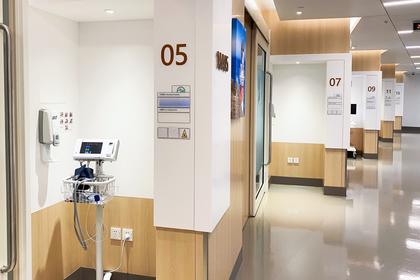Search
The goal of screening tests for breast cancer is to find it before it causes symptoms (like a lump that can be felt). Screening refers to tests and exams used to find a disease in people who don’t have any symptoms. Early detection means finding and diagnosing a disease earlier than if you’d waited for symptoms to start.
Breast cancers found during screening exams are more likely to be smaller and still confined to the breast. The size of a breast cancer and how far it has spread are some of the most important factors in predicting the prognosis (outlook) of a woman with this disease.
Screening Guideline
An active breast care health plan includes:
• Increasing self-awareness on breast health, i.e., if you notice any breast changes, please communicate with your doctor and follow medical suggestions for examinations and follow up visits
• Mammograms; a mammogram has been proved to decrease mortality between the age from 40 to 74, especially among the age of 50 and older. Get mammograms every year starting from 40 years old to 75 years old in order to get early treatment and increase survivor
If you want to know about breast self-exam and whether you need early screening and prevention, you can consult with your doctor.
We have consolidated current international standards on screening guide for average risk and high risk.
Guidelines for Women at Average Risk for Breast Cancer
These guidelines are for women at average risk for breast cancer. For screening purposes, a woman is considered to be at average risk if she doesn’t have a personal history of breast cancer, a strong family history of breast cancer, or a genetic mutation known to increase risk of breast cancer (such as in a BRCA gene), and has not had chest radiation therapy before the age of 30.
• Women between 40 and 44 have the option to start screening with a mammogram every year
• Women 45 to 54 should get mammograms every year
• Women 55 and older can switch to a mammogram every other year, or they can choose to continue yearly mammograms. Screening should continue as long as a woman is in good health and is expected to live 10 more years or longer
All women should understand what to expect when getting a mammogram for breast cancer screening – what the test can and cannot do.
Guideline for High Risk Women for Breast Cancer
Women who are at high risk for breast cancer based on certain factors, i.e., family history, or having had a biopsy and its result was high risk, or mammogram result showed should have mammogram earlier and also get breast color ultrasound, and even breast MRI. These women should get an MRI typically starting at age 30. This includes women who:
• Have a lifetime risk of breast cancer of about 20% to 25% or greater, according to risk assessment tools that are based mainly on family history
• Have a known BRCA1 or BRCA2 gene mutation (based on having had genetic testing)
• Have a first-degree relative (parent, brother, sister, or child) with a BRCA1 or BRCA2 gene mutation, and have not had genetic testing themselves
• Have radiation therapy to the chest when they were between the ages of 10 and 30 years
• Have Li-Fraumeni syndrome, Cowden syndrome, or Bannayan-Riley-Ruvalcaba syndrome, or have first-degree relatives with one of these syndromes
Click the link for more information on Breast Health Program Clinical Service
Click the link for more information on Jiahui International Cancer Center Clinical Service










